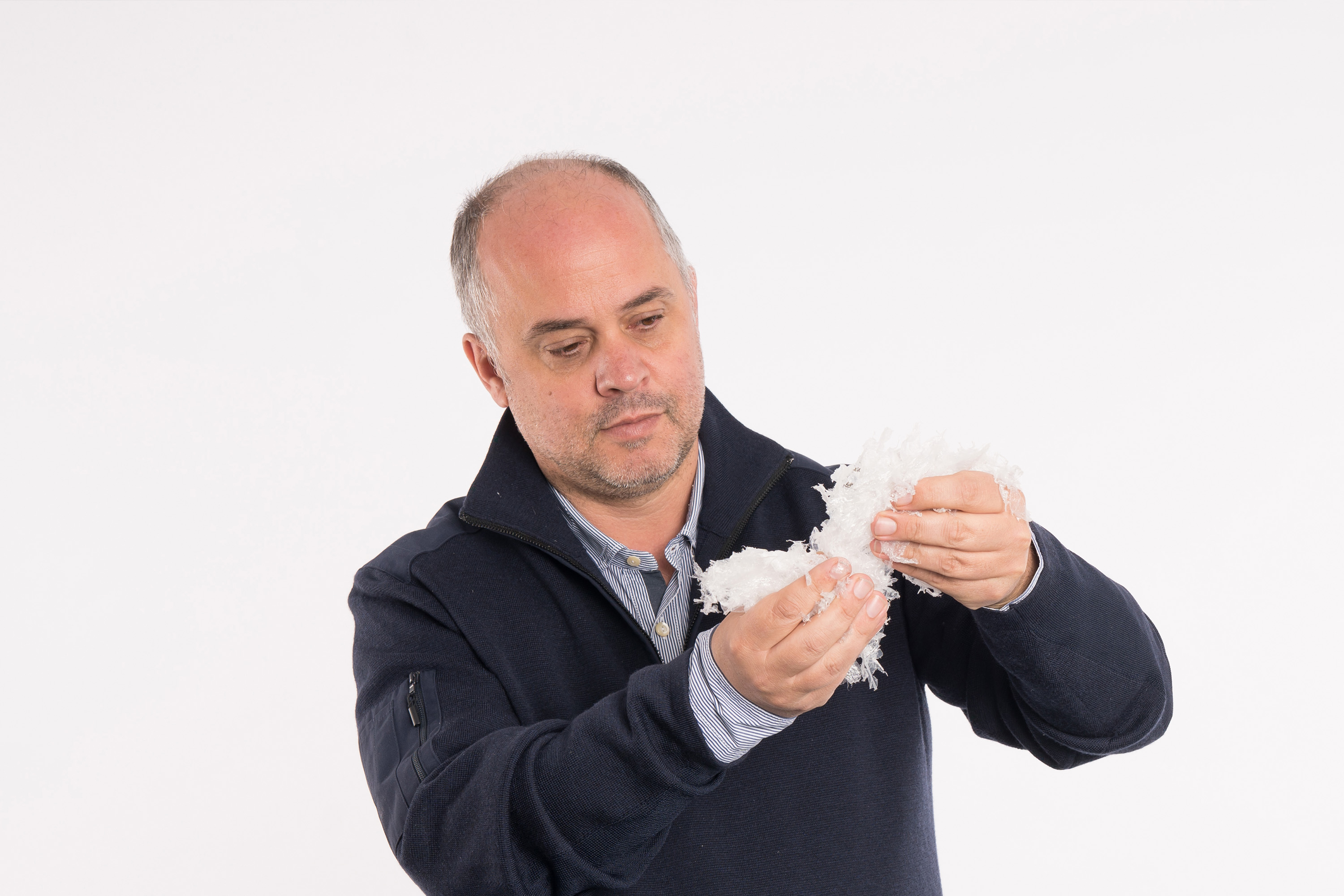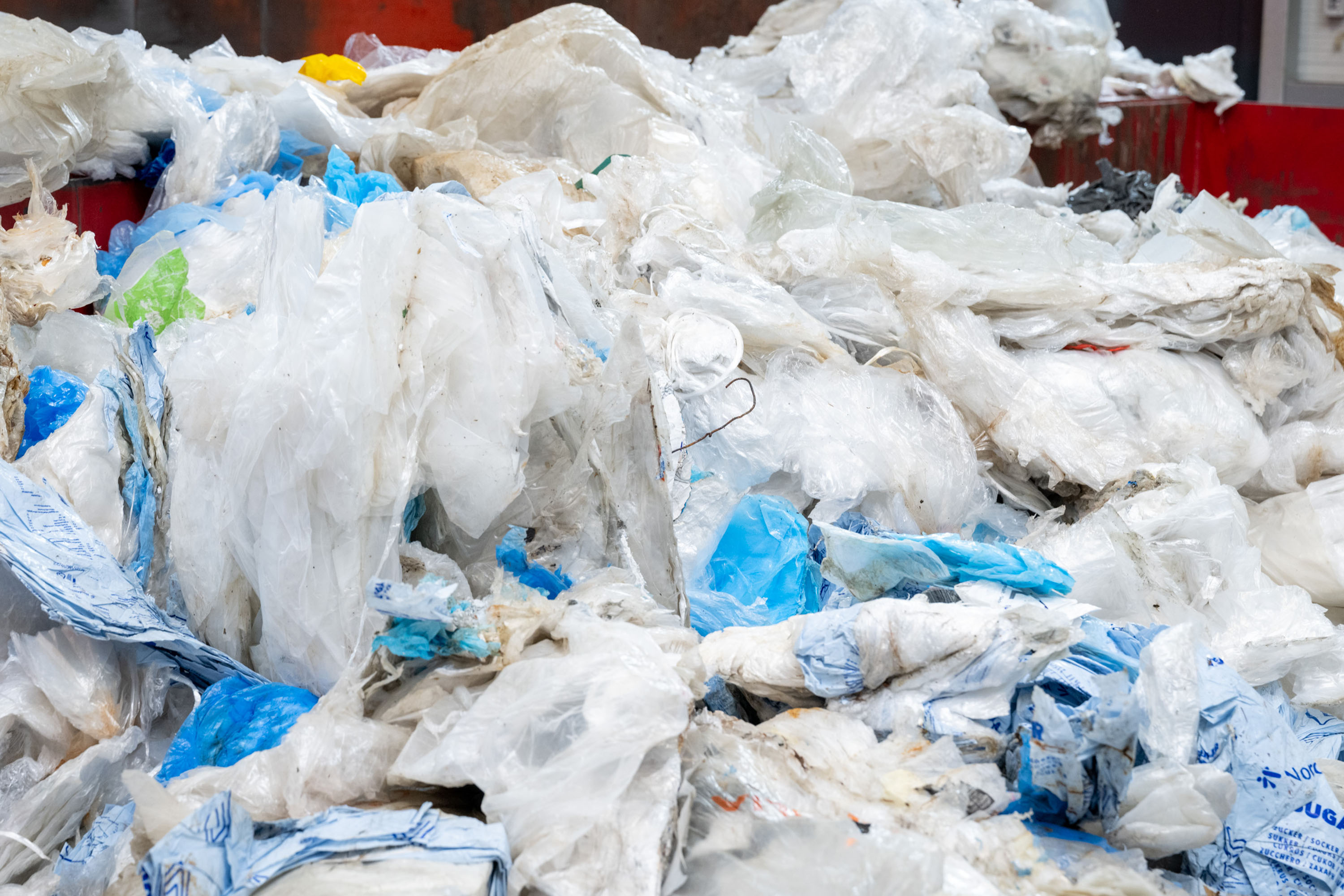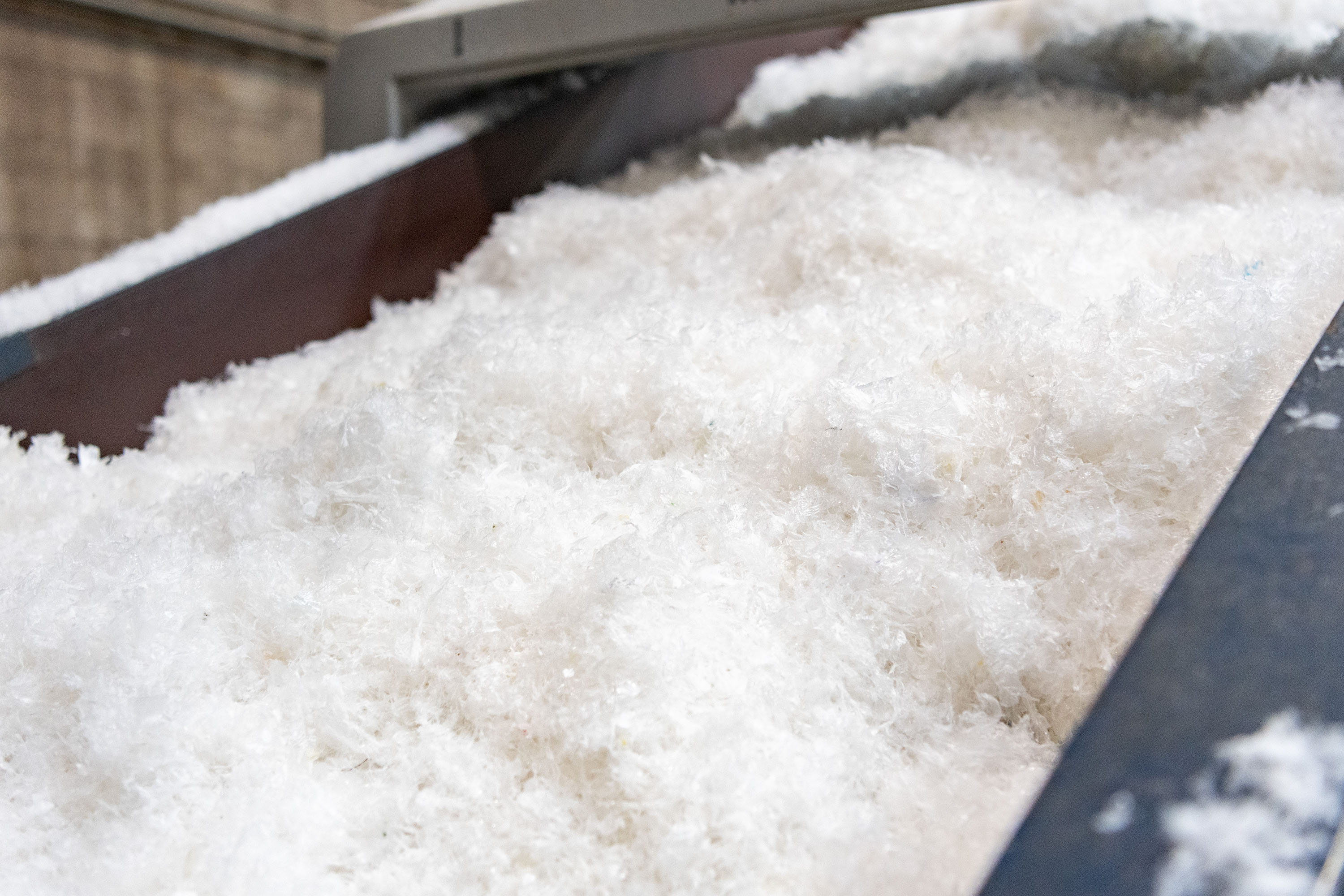
"Our new "plastics recycling" business unit was perfectly supported by the Lindner project engineers from start to finish."
"Our new "plastics recycling" business unit was perfectly supported by the Lindner project engineers from start to finish."

POST-COMMERCIAL
LLDPE & LDPE FILMS
Post-commercial film refers in general to transparent plastic films with a high stretch content, which are recovered from supermarkets and other businesses. These soft films are often contaminated with organic matter and paper labels, which must be removed and separated in a complex procedure. Drying thin stretch wrap poses a special challenge and is handled efficiently by a centrifuge from LINDNER’s Loop Dryer series. The goal is to produce a granulate for subsequent extrusion that is as transparent as possible and free of contaminants, with the same market quality as new material.



